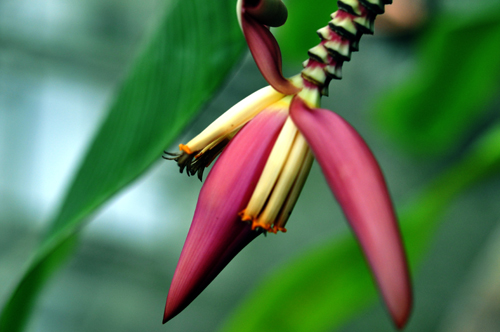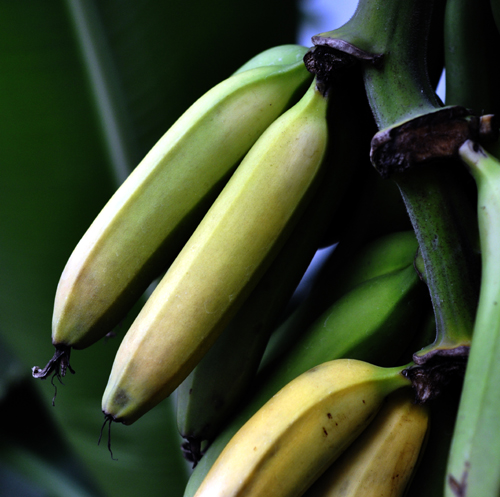Banana (Musa spec.)
When our plants begin to hibernate, some plants in the greenhouse just start. The bananas unfold their magnificent flowers and start to fruit. Especially in the water lily house the giant and exotic flowers can be admired along with different stages of fruiting. The fruits of Musa acuminata are even edible and form already at a time, when the tip of the stand still flowers. The fruits align with gravity – this so called gravitropism is, thus, the response to the famous question, why bananas are bent. The bananas, which we buy in the supermarket, are hybrids with a genetic problem: they are triploid (they do not harbour two chromosome sets, one from each, father and mother, but tree) and therefore are sterile. Therefore, the seeds in cultivated bananas do not develop and are just seen as slight taint in the cross section. Most of the roughly 100 wild species form instead hard and quite large (around 2-3 cm diameter) seeds.
Maybe, you have asked yourself, how one can then propagate bananas? Like other monocots, they form underground shoots, so called rhizomes that generate new individuals. In the plantations the shoots that have produced fruits are, therefore, simply cut, which stimulates the sprouting of new shoots. When you cut the fruit across, you still can see that the banana has a threefold symmetry, what reports the relationship with other monocots, such as our tulips or lilies.
Where to find them: water lily house and palm house.


